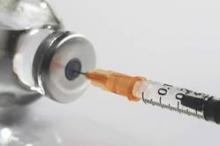A marked rise in pertussis cases in recent years is a result of the accumulated effects of switching from whole-cell to acellular pertussis vaccine in the 1990s, and not declining vaccination rates, according to epidemiological modeling published online April 23 in PLOS Computational Biology.
Since the 1990s, the incidence of pertussis in the United States has risen steadily, with 2012 seeing the highest number of cases since 1955, shortly after pertussis vaccine was introduced. Infants have continued to have the highest number of reported cases, but there also has been a recent shift in disease burden from adolescents to 7- to 11-year-olds, researchers noted.
Vaccination coverage, however, has remained robust for decades, at greater than 90%. What has changed is that the whole-cell pertussis component of the DTP vaccine was phased out in the 1990s due to convulsions and other safety issues and replaced by the acellular component in the DTaP.
That turned out to be the key when investigators from the Centers for Disease Control and Prevention and elsewhere ran a series of computer models to explain the upsurge in cases.
The model that best fit decades of actual incidence data from the CDC and other sources estimated 90% vaccine efficacy with the whole-cell series and essentially life-long protection but 80% efficacy with the acellular series and an average of 50 years of protection, meaning that some people become vulnerable to infection sooner (PLoS Comput. Biol. 2015 April 23 [doi:10.1371/journal.pcbi.1004138]).
Those differences reproduced “the trends in the … incidence data up to 2009; running the model forward over another three years shows a continued correspondence with observed incidence trends. Relatively small differences in the per-dose vaccine efficacy and duration of protection between acellular and whole-cell vaccines is sufficient to explain the recent upsurge in pertussis in the United States,” as well as the age-distribution shift, said the authors, led by Dr. Manoj Gambhir, a mathematical epidemiologist of Monash University, Melbourne, who is working with the CDC.
“Vaccine-induced immunity [with DTaP] wanes faster than previously thought … adults and adolescents may be an important reservoir of infection. Future refinement of the model … will allow for an exploration of alternative vaccination age-spacings for the five-dose childhood schedule; investigation into the effects of further booster doses (for example, decennially to adults); and cocooning vaccination strategies designed to protect infants who are most vulnerable to severe disease. … Booster doses may be sufficient to curtail epidemics while vaccine research continues,” they concluded.
Although pertussis mutation may be contributing to the problem, other reasons proposed for the upswing in cases – including increased reporting and changes in contact patterns between infected and healthy kids – are “not necessary to explain recent patterns in pertussis incidence,” the investigators noted.
The work was funded by the U.S. National Institutes of Health, the UK Medical Research Council, and the UK National Institute of Health Research. Dr. Gambhir is an employee of IHRC; the remaining authors have no relevant financial disclosures.



